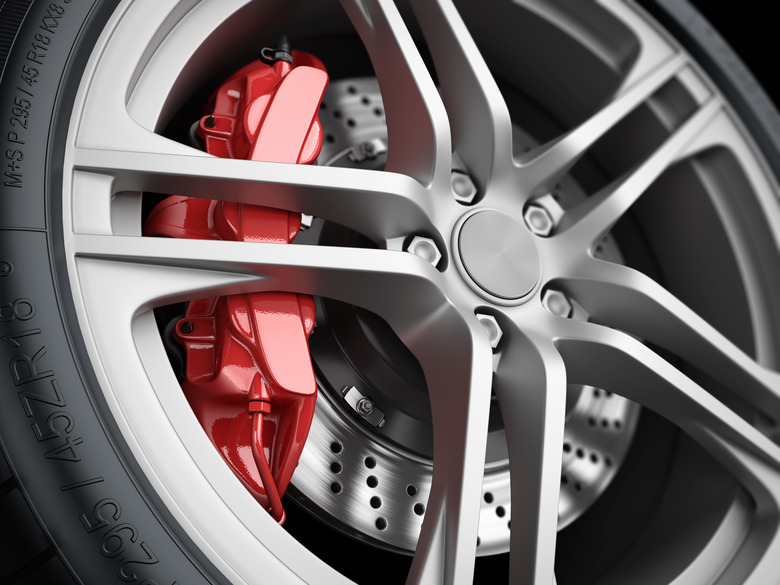How To Calculate Brake Torque
Torque is a force exerted on an object; this force tends to cause the object to change its speed of rotation. A car relies on torque to come to a stop. The brake pads exert a frictional force on the wheels, which creates a torque on the main axle. This force impedes the axle's current direction of rotation, thus stopping the car's forward movement.
Steps
Step 1
Draw a free-body diagram. A free-body diagram isolates one object and replaces all external objects with vector or torsional forces. This allows you to sum forces and determine the net force and torque acting on an object.
Step 2
Show all forces acting on the vehicle as the driver begins to brake. There is the downward force of gravity, and there is also the upward force exerted by the road. These two forces are equal and opposite, so they cancel each other out. The remaining force is the frictional force exerted by the road, which acts horizontally in the direction opposite to the vehicle's motion. As an example, suppose you are analyzing a 2,000 kilogram Jeep that has just begun braking. Your diagram would show two equal and opposite vertical forces of 19,620 Newtons, which sum up to zero, and some undetermined horizontal force.
Step 3
Determine the horizontal force of the road using Newton's second law–the force on an object equals its mass times its acceleration. You presumably either know or can obtain the weight of the vehicle from manufacturer specifications, but you will need to calculate the rate of deceleration. One of the simplest ways to do this is to assume an average rate of deceleration from the time the brakes are first applied, to the point of release. The deceleration is then the total change in speed divided by the time that elapsed during the braking process. If the Jeep went from a speed of 20 meters per second down to 0 meters per second in 5 seconds, so its average deceleration would be 4 meters per second per second. The force required to cause this deceleration equals 2,000 kg * 4 m/s/s, which equals 8,000 Newtons.
Step 4
Calculate the torque that the force of the road causes about the axle. Because torque equals force times its distance from the point of rotation, the torque equals the force of the road times the radius of the wheel. The force of the road is the equal and opposite torsional reaction caused by the brakes, so the braking torque is equal in magnitude and opposite in direction to the torque exerted by the road. If the Jeep's wheel has a radius of 0.25 meters, the braking torque equals 8,000 N * 0.25 m, or 2,000 Newton-meters.
TL;DR (Too Long; Didn't Read)
You may become confused with the fact that there are multiple wheels, and the vehicle will distribute a certain amount of weight over each one. However, the total torque still depends only on the amount of horizontal force required to stop the vehicle. If there are both front and rear brake pads and you want to know the torque exerted by each set, you can estimate that each set contributes one half of the total torque.
References
- "Kinematics and Dynamics for Machinery"; Charles E. Wilson and J. Peter Sadler; 2003
Cite This Article
MLA
Painting, Brad. "How To Calculate Brake Torque" sciencing.com, https://www.sciencing.com/calculate-brake-torque-6076252/. 13 March 2018.
APA
Painting, Brad. (2018, March 13). How To Calculate Brake Torque. sciencing.com. Retrieved from https://www.sciencing.com/calculate-brake-torque-6076252/
Chicago
Painting, Brad. How To Calculate Brake Torque last modified March 24, 2022. https://www.sciencing.com/calculate-brake-torque-6076252/
